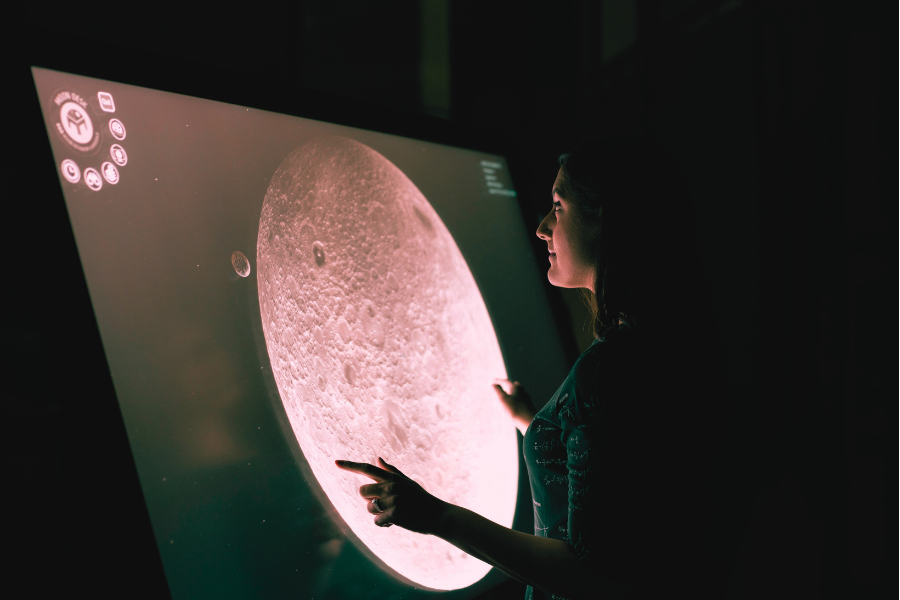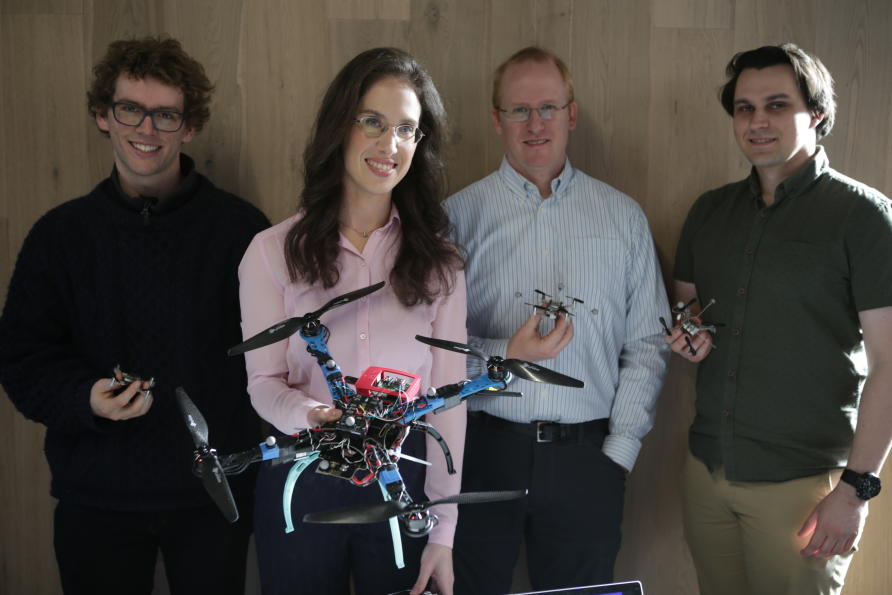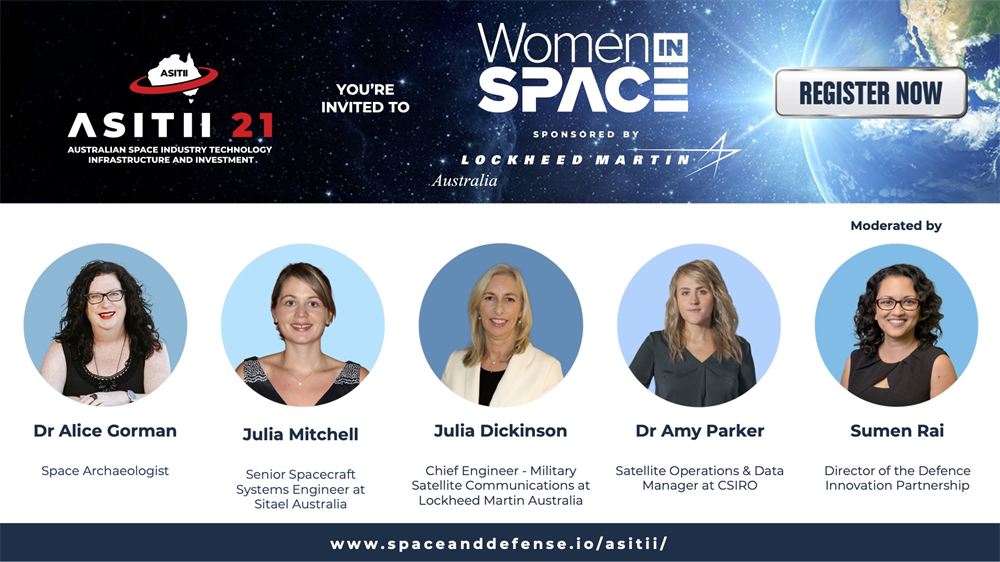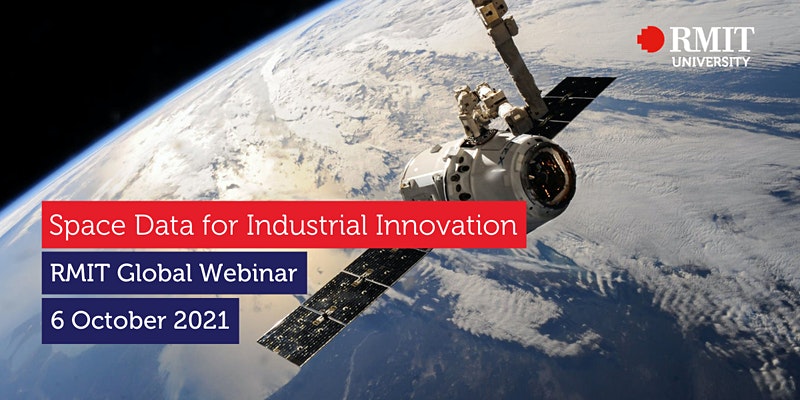PoSSUM SpIRIT - Victorian women leading the way to space

This week is the United Nations World Space Week (WSW), an international celebration of science and technology, which runs from 4 - 10 Oct this year.
Women in Space is the theme of the event this year which aims to bring more awareness to gender diversity in the space sector and shine the spotlight on the women who are making strides in space-related careers. Two women who are leading the space charge in Victoria are Scientist- Astronaut candidate, Kim Ellis Hayes and Mechatronic Engineer, Dr Airlie Chapman.
World Space Week features some inspiring events where you can hear directly from women who work in the space industry with ASSITII21 Women in Space. RMIT is also hosting a webinar on Space Data for Industrial Innovation and the pivotal role space technologies are playing in the transition towards digital and green economies.
Shining a light on women in space
Training to be Australia's first woman astronaut

Kim Ellis Hayes is a Senior Lecturer Space Research and Law at Swinburne University, School of Science, Centre for Astrophysics and Supercomputing and is expecting to fly her first suborbital mission sometime in 2023 as a payload specialist on a commercial mission!
After combining a science degree with two law degrees Hayes won a scholarship for the International Space University and received an Australian Government Endeavour Executive Award for a project at the NASA Kennedys Space Centre, which was the beginning of her space career.
As a PoSSUM (Polar Suborbital Science in the Upper Mesosphere) Scientist-Astronaut candidate, Hayes will also undergo flight training with former NASA astronaut instructors and PoSSUM team scientists using the spaceflight simulator which is currently set up as the Virgin Galactic Unity 22 vehicle. She will also receive high-G training, crew resource management training, high-altitude training and how to operate a series of instruments to measure physical atmospheric properties. Read more about her journey to become Australia's first woman astronaut in The Conversation here.
"Our future, is what we imagine for ourselves in our digitally connected and enabled world. In celebrating women in space, it's important to celebrate how far we have come, but also to strategically plan how to continue to build on the amazing work to date.
To all those women working in space now, and to all those women planning to work in space in the future - imagine what you want, shout it from the rooftops and confidently and steadily move forwards step by step." - Kim Ellis Hayes, Senior Lecturer Space Research and Law at Swinburne University, School of Science, Centre for Astrophysics and Supercomputing and Chief Executive Officerand founder of International Earth & Space Technology
Designing Robots for space exploration
As co-investigator of the SpIRIT (Space Industry - Responsive - Intelligent - Thermal Nano-satellite) mission, and has a senior lecturer in mechatronics at the Melbourne School of Engineering at University of Melbourne, Dr Airlie Chapman has a lot on her plate.
With the SpIRIT mission set to launch in 2022, Dr Chapman and her colleagues' main focus right now is on keeping on top of the mission's tight development schedule which includes design, development and manufacture of many novel systems. By leveraging existing IP and design work amongst the SpIRIT consortium, and with the support of the Australian Space Agency, Italian Space Agency, and the United Kingdom Space Agency in an advisory role, the mission is on track to be a success. Following the launch, SpIRIT will operate in orbit for 2 years and demonstrate the long-term performance of Australian-made hardware. You can read more about the mission at the University of Melbourne here.
But what about the robots? Mechatronic engineers explore developments in automation and manufacturing – blending multiple disciplines of engineering. And it can involve creating smart machines that are aware of their surroundings and can make autonomous decisions. The use of multi-vehicle robotics by Chapman and her team will extend beyond the SpIRIT mission, they will also help solve some of the problems faced by humans doing dirty and dangerous jobs. The potential for their work to impact across multiple industries is also far reaching, including aerospace and defence, critical infrastructure and logistics, agricultural robotics, and even automation in mining.
The team's work to support the SpIRIT mission continues Australia's decades-long history in space engineering.
"Australia has actually had quite a long rich history in space exploration and been part of the space economy."It actually began probably in about the 1950s and 60s when Australian experts were involved in tracking the Apollo spacecraft.
Few people know this, but in 1967 Australia became the third nation to design and launch a satellite into orbit, and it was actually launched from Woomera. I see this being a really exciting environment that we can keep on building our abilities as a nation and collaborate with other nations, as well as training future engineers and scientists to continue to build this field." - Dr Airlie Chapman, Senior Lecturer in Mechatronics at the Melbourne School of Engineering at University of Melbourne
Read more about how robots could protect us in the surf at Pursuit.
Leading space science for the Victorian State Government
Dr Amanda Caples is Victoria’s Lead Scientist, a ‘catalyst’ responsible for working across the Victorian Government to identify opportunities for economic outcomes by building relationships between business, the research sector and government. Caples brings to the role broad experience in technology commercialisation, public policy development and governance of public and private entities. Caples will be opening the 19th Australian International Aerospace Congress later this year, forging new connections with Australia’s and international leading aerospace engineers and scientists in the military and commercial aerospace environment.
“Victoria is at the forefront of research, engineering and advanced manufacturing in the areas of aerospace, satellite communications, cybersecurity and spatial information for both the civil and defence industries.” - Dr Amanda Caples is Victoria’s Lead Scientist
Victoria's Space Technologies Sector
The global space industry is forecast to be worth more than $1 trillion by 2040. With more than 100 space-related science and technology companies based here, Victoria is well positioned to coordinate national and international collaboration on space and attract global investment. This includes some of the world's biggest names in aerospace such as Lockheed Martin, Thales, Boeing and BAE Systems, which carry out aerospace research, development and manufacturing activity in Victoria.
Melbourne has five top 500 globally ranked universities with relevant space related research disciplines and relationships with international space agencies. In addition, the engineering schools of our universities attract a broad range of industry leaders. Here are just three of the initiatives.
-
Swinburne’s Space Technology and Industry Institute will bring together world-class capabilities in astrophysics, aerospace, aviation, advanced manufacturing, artificial intelligence and education. The new institute will inspire education, research and innovation in a sector that is projected to be worth US$1.1 trillion globally by 2040.
-
A new Space Industry Hub at RMIT will connect local business and research to global opportunities in space technology. The Victorian Government's $1 million just announced for the Hub is being matched by $1 million from SmartSat CRC, significant technical and training support from Amazon Web Services (AWS), and industry engagement backing from FrontierSI.
-
The University of Melbourne SpIRIT (Space Industry – Responsive – Intelligent – Thermal Nano-satellite) mission aims to grow Australian space industry capabilities through the development of an innovative nano-satellite. Training the space-sector workforce, students will have the opportunity to join the SpIRIT engineering teams at the University of Melbourne and at the industry partners both as part of postgraduate research projects and through a paid internship program, working under the expert mentoring and supervision of academics and industry professionals.
Read more about why Victoria is the place for space.
Upcoming Space Events

19th Australian International Aerospace Congress
Mon 29 Nov - Wed 1 Dec 6 Oct
Australian International Aerospace Congress (AIAC) presents an opportunity to hear from international and Australian speakers about new trends and technologies in aerospace. Open to practicing systems engineers, students, academics, researchers, and industry specialist providers.
ASSITII21 presents
Wed 6 Oct, 12:00 PM - 1:00 PM
Women in Space is a free special virtual event with a stellar lineup. Hear from a panel of incredible women, all making a difference to the Australian Space industry in their own unique way. This year’s theme for World Space Week is celebrating women in space, so show your support, connect and learn something new at this exciting session.
RMIT University presents RMIT presents
Space Data for Industrial Innovation
Wed 6 Oct, 6:00 PM - 7:15 PM
Join RMIT's Space Data for Industrial Innovation. This global webinar will explore the opportunities, challenges and future vision of using space data for industrial innovation by bringing together representatives of the space industry as well as government agencies from Europe and Australia.










